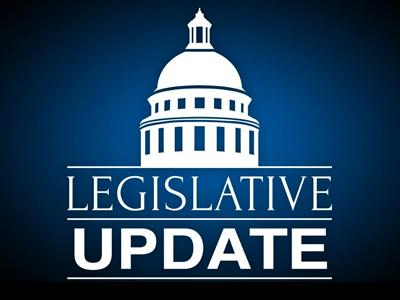What President Biden’s Executive Order On AI Means For Healthcare

- Amanda Bridges
- November 9, 2023
- Legislative Updates, News
On Monday, Oct. 29, President Joe Biden signed an executive order prioritizing the establishment of new safety, security, and fairness standards for artificial intelligence (AI), especially within the domain of healthcare. This directive mandates that developers of AI systems, particularly those bearing potential risks to public health and safety, must share their training data with the federal government. This requirement extends to systems with implications for national security and economic stability.
In the healthcare sector, the Department of Health and Human Services will implement a safety program aimed at mitigating potential harm or unsafe practices linked to AI. The order also encompasses measures to increase funding for AI research in healthcare and the formulation of a strategic blueprint for the responsible deployment of AI. Additionally, it addresses important issues like fortifying privacy protections, enforcing thorough safety assessments, and implementing measures to deter the improper use of AI.
Despite the considerable advantages that AI could bring to healthcare, there is a significant deficit of trust among patients. This executive order mirrors the broader efforts of the administration in ensuring that AI applications in healthcare are both secure and reliable. It holds the potential to pave the way for further legislative action in this field.
“We’re going to see more technological change in the next 10, maybe the next five years, than we’ve seen in the last 50 years,” President Biden said. “And that’s a fact. And the most consequential technology of our time, artificial intelligence, is accelerating that change. It’s going to accelerate it at warp speed. AI is all around us.”
AI provides incredible opportunities, but comes with significant risks, the president said.
“One thing is clear — to realize the promise of AI and avoid the risk, we need to govern this technology,” he said. “There’s no other way around it, in my view. It must be governed.”
What the executive order does:
- Additional standards and requirements: The executive order introduces new standards and requirements for AI systems.
- Sharing safety test results: Developers of AI systems are mandated to share their safety test results with the federal government. This aligns with existing legislation like the Defense Production Act.
- Biological synthesis screening standards: The administration will establish standards for screening biological synthesis, safeguarding against the potentially dangerous use of AI for creating harmful biological materials. These standards will be a condition for receiving federal funding.
- Safety standards before public release: The National Institute of Standards and Technology will set safety standards before AI systems are publicly released. The Department of Homeland Security (DHS) will apply these standards to critical infrastructure sectors and create an AI Safety and Security Board. Additionally, the Department of Energy will collaborate with DHS to address various types of risks.
- Strengthening privacy: The order aims to enhance privacy by evaluating how agencies collect and utilize commercially available information. Guidelines will be developed for federal agencies to assess the effectiveness of privacy-ensuring techniques. The administration also intends to advance privacy-preserving technology and research, including tools like cryptography.
- Addressing algorithmic discrimination: The executive order addresses algorithmic discrimination, empowering the Department of Justice and federal civil rights offices to effectively investigate and prosecute civil rights violations related to AI. The administration will also develop best practices for AI use in various aspects of the criminal justice system.
- Minimizing harms and maximizing benefits in job displacement: Best practices will be established to minimize the negative impacts and maximize the benefits of AI in relation to job displacement and labor standards.
- Leveraging skilled immigrants and non-immigrants: The administration aims to utilize the expertise of highly skilled immigrants and nonimmigrants in key areas, facilitating their stay, study, and work in the U.S. This will be achieved by streamlining the visa interview and review process to be more efficient.
Sources
1. “What Biden’s executive order on AI means,” CBS News, Oct. 30
2. White House fact sheet, Oct. 30
3. “Biden issues U.S.’ first AI executive order,” CNBC, Oct. 30

